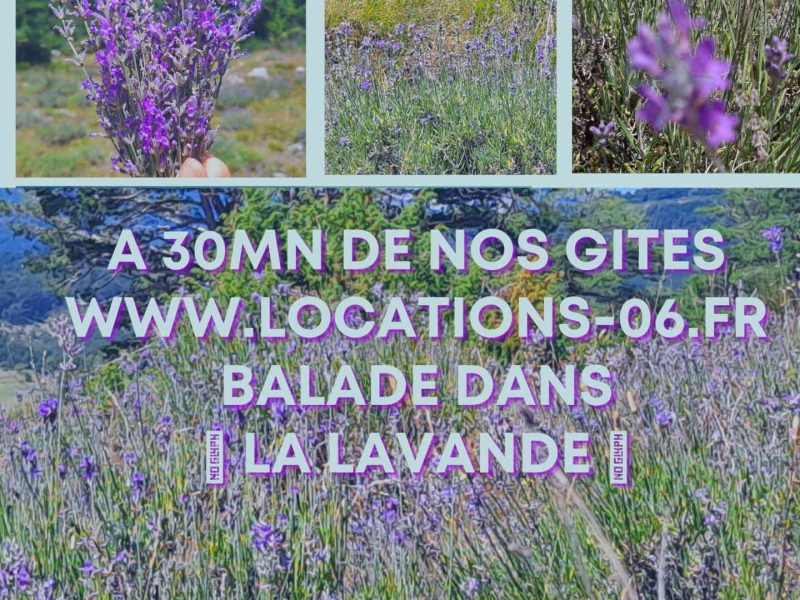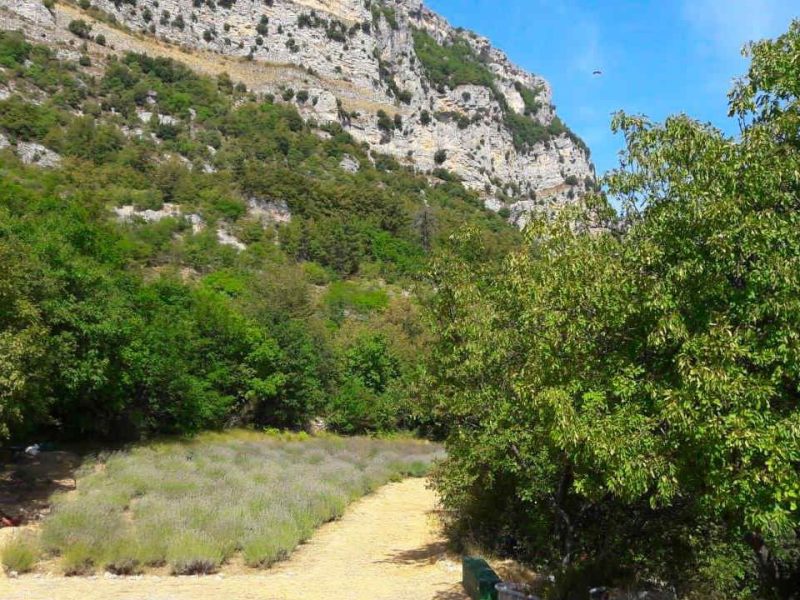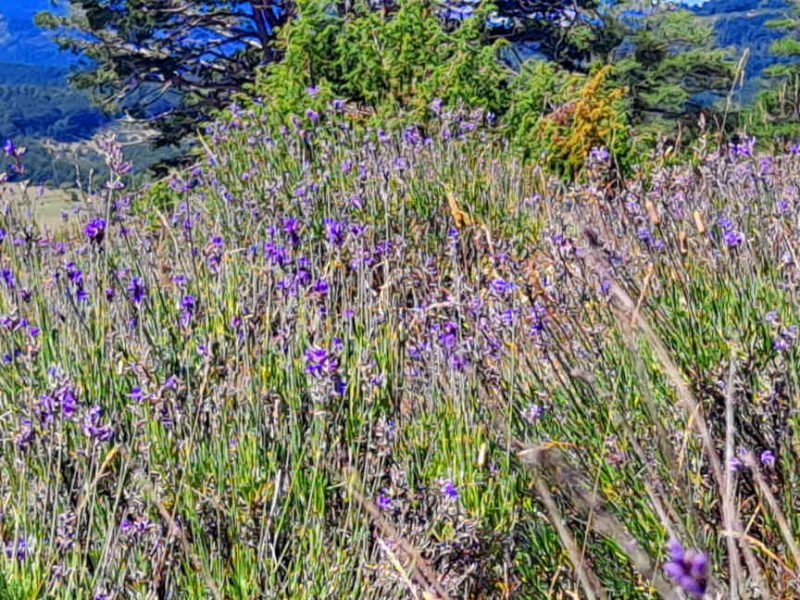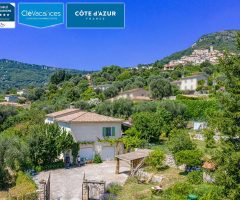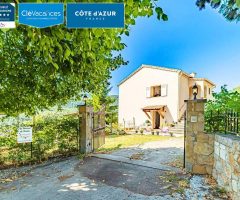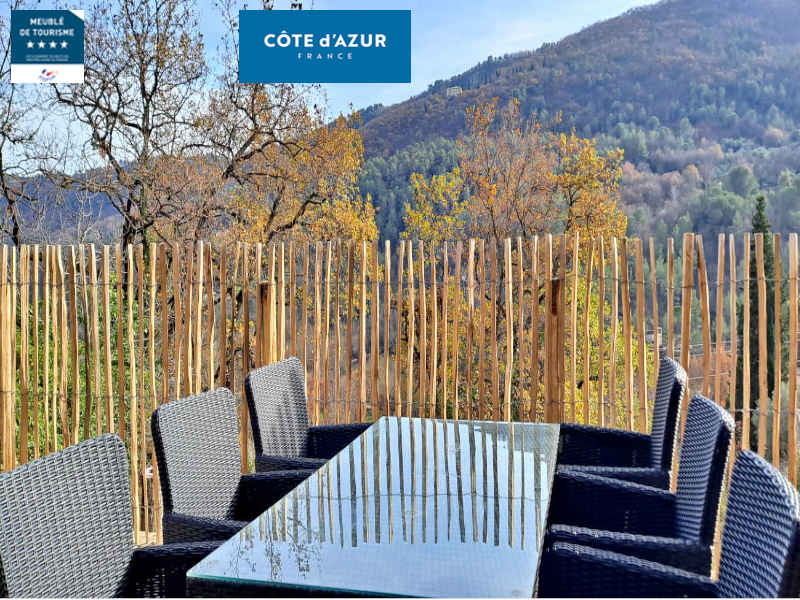Walk among the lavender fields
Lavender Alpes Maritimes Grasse
An idea for a summer stroll that smells of Provence, and especially lavender.
If you want to get away from it all, what could be nicer than taking a trip from our locations-06.fr cottages towards the Grasse Middle Country and its beautiful landscapes.
Walk among the lavender fields
Near our cottages are the Gorges du Loup, which are pretty white limestone gorges at the bottom of which the LE LOUP river flows.
From the place called Pont du Loup and Confiserie Florian a road takes us towards the beauties of these Middle Country landscapes where bend after bend we discover beautiful cliffs then tunnels and waterfalls, the most famous of which is the Cascade of Courmes.
We continue to climb, passing over a large bridge from where we have a small glimpse of the famous Leap of the Wolf which you absolutely must visit because here Nature has once again worked wonders. Then we arrive at the village of Gréolieres. We continue to climb and for those with a sweet tooth, we will not fail to stop at the beekeeper who is just outside the village and who has always delighted us. And we then arrive on the heights of Gréolieres towards the ski resort.
There, in the middle of summer, Nature still has a beautiful spectacle in store for us: beautiful lavender in flower, thistles and savory.
Lavender… fine lavender, that is to say the one that grows at altitude. The one that is rare because it is natural and not cultivated.
She dazzles us with her beauty.
Lavandula angustifolia is the Latin name for true lavender, also called fine lavender and officinal lavender.
The names fine lavender, officinal lavender and true lavender thus designate the same species.
According to wikipedia Lavandula is a genus of plants in the Lamiaceae family. These are dicotyledonous shrubs, with flowers most often mauve or purple arranged in spikes, most of which are very fragrant species and are widely used in all branches of perfumery. One of the best known and most cultivated species is lavandin.
But in Gréolieres in the Alpes Maritimes, 30 minutes from our gites, it is true lavender and not lavandin grown in fields.
Lavender has always been very present in representations of the South of France.
It is used to perfume linen, to decorate, to repel insects or to treat yourself.
But we like to look at it in its natural environment, take photos, smell it and lose ourselves in fragrant thoughts among the little butterflies and grasshoppers when the sun beats down on our heads and reminds us of how lucky we are to have live on the Cote d’Azur.
So if this walk inspires you, don’t hesitate.
It’s nearby, it’s free, it’s natural and inspiring…
Long live lavender
Long live Nature
Lavender Alpes Maritimes Grasse
Walk among the lavender fields
Lavender remains the best-known and most used essential oil.
The Romans already took advantage of the aromatic qualities of Lavender to perfume their clothes and their baths.
Its name is also derived from the Latin “lavare”, meaning “to wash”.
The term “washerwoman” comes from the fact that lavender was added to laundry water in order to perfume clothes.
In the Middle Ages, its disinfectant properties were used in fumigation.
At the beginning of the 20th century, René-Maurice Gattefossé, a perfumer-chemist, who had burned his hands during an explosion in his laboratory, prevented gangrene from setting in by immersing them in a container containing oil essential Lavender.
In French hospitals, essential oils, including Lavender, have long been used to sanitize and purify the air, which was known to help in the fight against microbial and fungal infections.
Its numerous indications and its great softness make fine Lavender essential oil from Provence one of the jewels of modern aromatherapy.
It is also used in Indian Ayurvedic medicine to relieve depressive states as well as by Tibetan Buddhist doctors to treat certain mental disorders.
Share this article on social networks



